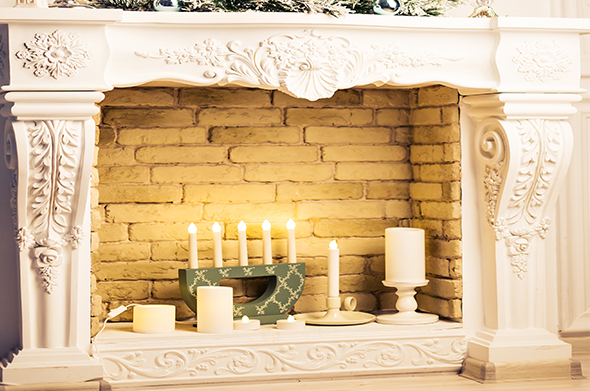Open any interior design magazine and you’re likely to spot one: The Unused Fireplace – retired, but still looking great with a stylish makeover. Maybe you’re even considering doing it yourself, thinking you may save money because you won’t need an annual chimney inspection and cleaning. Think again.
Your fireplace is more than just decoration. It’s an integral part of your home’s ventilation system. And even if you’re not using it, your natural-gas or oil-fueled appliances are. Not only that, it could be home to fur or feathered critters who aren’t afraid to leave nesting debris and other “calling cards” behind. So even if you no longer use it as a traditional fireplace, you’ll still need to keep it in good working order.
Your Chimney is Your Home’s Respiratory System
Sometimes we talk about the fireplace being the heart of the home. But really, it’s more like the lungs.
If you use a gas- or oil-fueled appliance, such as a furnace, it relies on the chimney for proper exhaust venting. It takes harmful by-products (like carbon monoxide) created by burning these fuels and “exhales” them outside, where they’re no longer a danger to the home’s inhabitants. In addition to carrying off toxic gases, chimneys also create the draft (like an “inhale,” or flow of air) that provides the proper air and fuel mixture for efficient operation of the heating appliance.
Oil-fueled appliances can generate soot, which is known to build up in flues and chimney liners – just like the soot that is generated from wood fires. Excessive soot causes problems that range from chimney fires, to flue deterioration, to chimney blockages that can direct toxic fumes back into the house.
Natural gas is a clean-burning fuel, but today’s high-efficiency gas furnaces pose a special problem. The fumes they produce are cooler and contain high levels of water vapor, which are more likely to cause condensation than those produced by older models. Since these vapors also contain chemicals picked up from house-supplied combustion air, the flues can be subject to corrosive conditions. Not only that, many gas appliances use chimneys that once served oil furnaces. If the liners of these chimneys are made of terracotta, they deteriorate particularly fast when the corrosive, water-laden gas vapors mix with old oil soot deposits. The result is debris that builds up at the bottom of the flue and block the chimney.
In many cases, this buildup and damage occurs without any external symptoms. Without regular inspections, you won’t know there is a problem until it turns into a dangerous situation requiring an expensive repair.
Your Chimney May be “Home Sweet Home” to Nature’s Squatters
Your uncapped chimney may look like the perfect new home for birds, raccoons, and squirrels – especially if it hasn’t been used for a while. And with weather like we’ve been having, who could blame them?
But these squatters aren’t known for their housekeeping skills. Nesting debris like wood and mud can quickly clog a chimney, and that’s not the only thing they leave behind, if you know what we mean. Why is this a problem if you’re not using the fireplace? Two words: The smell.
While everyone loves the smell of a wood fire, the smells that linger in a fireplace when it’s not in use aren’t as pleasant. That “musty fireplace smell” that’s so common in the spring could indicate water damage in your chimney. If your fireplace has a different smell – decomposing matter, or animal waste – that’s also a sign it needs a good cleaning. If you happen to hear skittering, scratching, our chirping coming from your chimney, it probably has an active resident. Call your local animal rescue immediately; these experts can safely remove the animal and return it back to the wilderness. Under no circumstances should you try to build a fire and smoke the animal out.
Even if you no longer fire-up your fireplace, you still need to have your chimney cleaned and inspected annually. Think of it like an annual physical for your house. Since your chimney and flue help your house “breathe,” you’ll want to make sure they’re in peak physical condition. Or if there’s a problem, you’ll want to know about it before it becomes a bigger, more costly issue. It’s one checkup that can keep you and your family breathing a lot easier.
Contact Doctor Flue
Ready to schedule your annual cleaning and inspection? Contact us today! We’ll get you set up right away so you can have peace of mind.
Call Us: 1-800-438-3583
Email Us: office@drflue.com
Office Hours: Mon-Fri: 8am-4pm
Connect with Doctor Flue on Social Media
Facebook | Twitter | Google + | YouTube | Pinterest | Houzz

